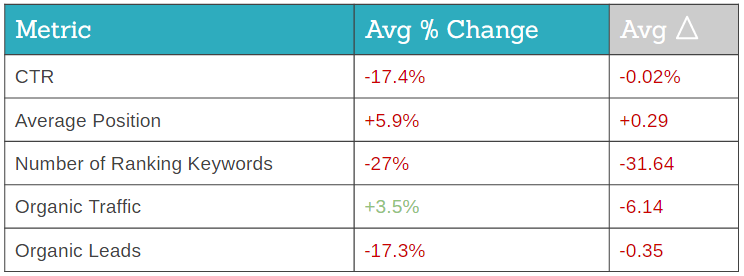Here at Seer, we take a human-first approach to pretty much everything we do: from the way we market our clients, to the benefits we offer to our own team members, and with the advice we share in the marketing community at conferences and on our blog. We’ve operated that way for years, but have invested very little in how that all plays out with our own marketing efforts. We’ve never really needed to; our business comes from our reputation as high-quality service providers -- not “great self-serving marketers.”
As the new keeper of Seer’s marketing, developing a strategy to align with our vision and crafting an execution plan is a mighty tall order. But we’ve gotta start somewhere.
So, why not start with something small and totally within my sphere of influence? Something that is highly relevant to our business offering, that many of us are familiar with? I'm talking about standard on-page optimization.
If our vision and recommendations are to speak and write and design for a human audience rather than a search engine, we should be practicing what we preach.
A few months ago, we started with a small test, just to see if human-first approach is the way to go when it comes to optimizing for meta data, a classic SEO ranking signal for search engines. Spoiler alert: it may not be, but we’ll continue to despite what the data is telling us. Read on to find out why.
What we did:
We “un-optimized” our top-level navigation pages (14 pages total). Think: home page, services pages, about page, case studies, etc. We started with these top-level nav pages because, historically, they have not brought in much organic traffic or leads/clients (a tangible success metric for marketing efforts), therefore it was a pretty low-risk test for the business.
What does “un-optimize” mean, exactly?
We simply removed the traditional "keywords” that were relevant to the page in question in favor of using branded and human-first language. We asked ourselves, “What would a user want to see when seeing these words in a SERP?” and got to writing. Shout out to @Lexi_Herrick for doing the actual writing!
Here are a few examples:




Why we did it:
- Our meta data did not align with our brand and vision. (No offense to the person who wrote them… spoiler: it was me, back in 2015 during our website redesign.) If part of our message to the community and our own clients is to put audiences first, and those people looked at our own website, they’d see we don’t follow through on our own promises.
- Organic traffic, particularly through top-level nav pages, is not a meaningful source of leads or revenue for Seer; those pages don’t rank for much anyway. Our clients consistently rate us highly in bi-annual NPS surveys (186% higher than our industry average) and, as such, the majority of our business comes from referrals from a job well done by our team, not ranking for “SEO Agency” or “PPC Agency”. In other words, it was a low risk to the business.
The Impact:

Takeaways
Updating meta data on our top-level nav pages had little significant impact on clickthrough rate (CTR), average position, number of rankings, organic traffic, and leads from organic search. So, if we’re given the choice to get a little less traffic and .35 less leads over a 6 week period OR stay true to who we are, innovate, and test -- we choose the latter.
Do we recommend others do this?
If you get significant traffic and revenue from organic search, weigh your risks. If organic drives a significant portion of your business but still want to run a test, don’t start with pages within a critical conversion path.
What we’ll do now:
- We’re planning to round out the test by updating remaining pages from our top-level nav.
- We’re planning to run this test for more critical pages from our website like high-traffic, high-converting blog posts.
For more examples of a human-first approach to crafting your meta data, check out this post by Dan Shure from Evolving SEO. Do you have other examples of human-first meta data? Think we're just plain crazy for doing this? Let us know in the comments below! 

